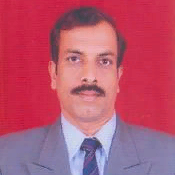
Prakash H N
Work place: Department of Computer Science and Engineering, Rajeev Institute of Technology, Hassan, 573201, India
E-mail: prakash_hn@yahoo.com
Website:
Research Interests: Analysis of Algorithms, Data Structures and Algorithms, Information Retrieval, Image Processing, Pattern Recognition
Biography
H.N. Prakash received the B.E. degree in Electronics and Communication Engineering from the University of Mysore, Mysore, India, in 1990 and the M.Tech degree in Electronic Instrumentation from Regional Engineering College, Warangal, India in 1995 respectively. He received the Ph.D. degree in Computer Science and Engineering from the University of Mysore, Mysore, India, in 2010. He is currently a Professor in the Department of Computer Science and Engineering at Rajeev Institute of Technology, Hassan, India. He has authored several peer reviewed papers at national and international conferences and Journals Including IEEE Transactions. His research interest includes signature analysis and retrieval, clustering, biometrics, Image processing, Pattern recognition and symbolic data analysis. Dr. Prakash is a life member of Indian professional bodies such as Institute of Engineers, Indian Society for Technical Education (ISTE) and System Society of India (SSI) and Member of Indian Institute of Engineers, India.
Author Articles
Data Content Weighing for Subjective versus Objective Picture Quality Assessment of Natural Pictures
DOI: https://doi.org/10.5815/ijigsp.2017.02.04, Pub. Date: 8 Feb. 2017
Estimating the visual quality of picture is a real challenge for various picture and video frame applications. The aim is to evaluate the quality of picture automatically in both subjective (human visual frame work) and objectively. The quality of picture is evaluated by comparing precision and closeness of a picture with reference or error free picture. The quality estimation can be done to achieve consistency in desired quality of picture with help of modeling remarkable physiological, psycho visual components framework and picture fidelity measure methods. In this article, the picture quality is evaluated by analyzing loss of picture information of the distortion system using differing noise models and examine the relationship between picture data, visual quality and error metric. The quality of picture & video frame assessment is really important that, every human can judge the visual quality of natural picture. The subjective quality of picture is assessed by using structural similarity metric, objective quality of picture is computed by root means squared error, mean squared error and peak signal to noise ratio and data content in picture is weighted through entropy.
[...] Read more.Natural Image Super Resolution through Modified Adaptive Bilinear Interpolation Combined with Contra Harmonic Mean and Adaptive Median Filter
DOI: https://doi.org/10.5815/ijigsp.2016.02.01, Pub. Date: 8 Feb. 2016
Super resolution is a technique to enhance the scale of image in digital image processing. The single low resolution and multiple low resolution techniques have been used by many researchers in reconstructing high resolution image. The above resolution increasing techniques are researched under spatial and frequency domain. When increased in the resolution of image, it is very important to retain the quality of image, which is the challenging task in the domain of digital image processing. Here in this paper, the super resolution architecture for single low resolution technique has been proposed to reconstruct the high resolution image by combining interpolation and restoration methods in spatial domain. The modified adaptive bilinear interpolation is proposed for interpolation and contra harmonic mean & adaptive median filter are used for restoration of single low resolution image. The experimentation is done on standard data set show that, the results obtained from modified adaptive bilinear interpolation are competitively improved when compare to other existing single low resolution techniques in interpolation domain.
[...] Read more.Other Articles
Subscribe to receive issue release notifications and newsletters from MECS Press journals